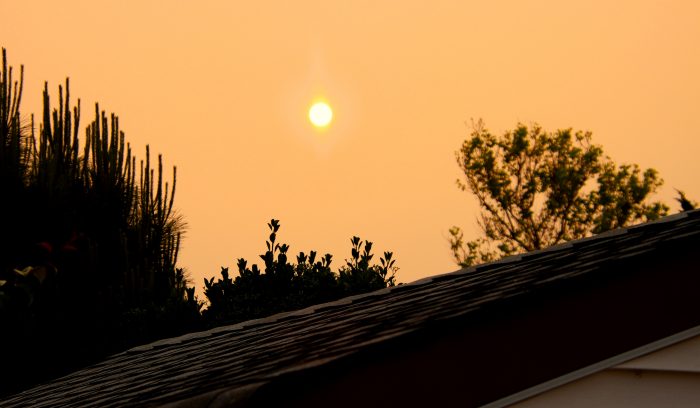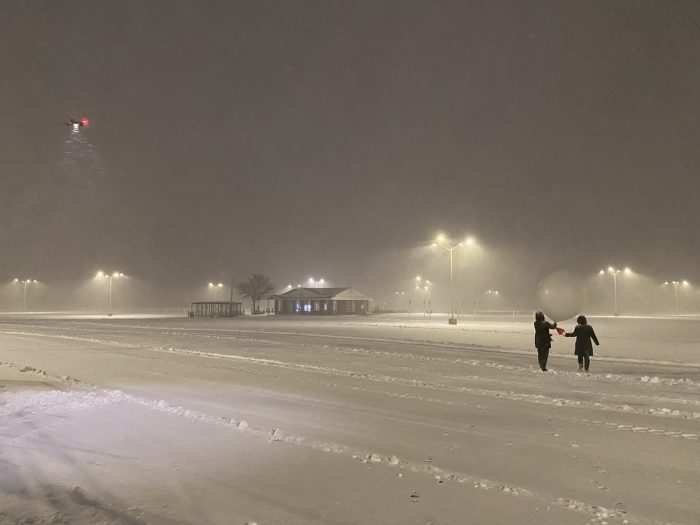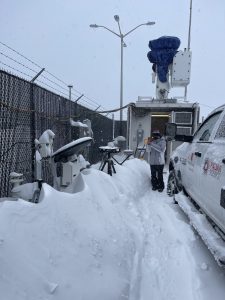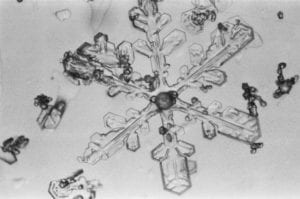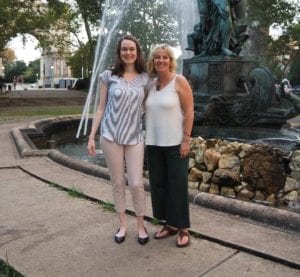Brian Colle saw it coming, but the word didn’t get out quickly enough to capture the extent of the incoming smoke.
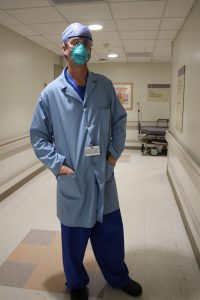
The smoke from raging wildfires in Quebec, Canada, last week looked like a “blob out of a movie” coming down from the north, said Colle, head of the atmospheric sciences division at Stony Brook University’s School of Marine and Atmospheric Sciences. As the morning progressed, Colle estimated the chance of the smoke arriving in New York and Long Island was “80 to 90 percent.”
Colle, among other scientists, saw the event unfolding and was disappointed at the speed with which the public learned information about the smoke, which contained particulate matter that could affect human health.
“There’s a false expectation in my personal view that social media is the savior in all this,” Colle said. The Stony Brook scientist urged developing a faster and more effective mechanism to create a more aggressive communication channel for air quality threats.
Scientists and doctors suggested smoke from wildfires, which could become more commonplace amid a warming climate, could create physical and mental health problems.
Physical risks
People in “some of the extremes of ages” are at risk when smoke filled with particulates enters an area, said Dr. Jeffrey Wheeler, director of the emergency room at St. Charles Hospital in Port Jefferson. People with cardiac conditions or chronic or advanced lung disease are “very much at risk.”

Dr. Robert Schwaner, medical director of the Department of Emergency Medicine and chief of the Division of Toxicology at Stony Brook University Hospital, believed the health effects of wildfire smoke could “trickle down for about a week” after the smoke was so thick that it reduced the amount of sunlight reaching the ground.
Amid smoky conditions, people who take medicine for their heart or lungs need to be “very adherent to their medication regimen,” Schwaner said.
Physical symptoms that can crop up after such an event could include wheezing, coughing, chest tightness or breathing difficulties, particularly for people who struggle with asthma or chronic obstructive pulmonary disease.
When patients come to Schwaner with these breathing problems, he asks them if what they are experiencing is “typical of previous exacerbations.” He follows up with questions about what has helped them in the past.
Schwaner is concerned about patients who have had lung damage from COVID-related illness.
The level of vulnerability of those patients, particularly amid future wildfires or air quality events, will “play out over the next couple of years,” he said. Should those who had lung damage from COVID develop symptoms, that population might “need to stay in contact with their physicians.”
It’s unclear whether vulnerabilities from COVID could cause problems for a few years or longer, doctors suggested, although it was worth monitoring to protect the population’s health amid threats from wildfire smoke.
Local doctors were also concerned about symptoms related to eye irritations.
Schwaner doesn’t believe HEPA filters or other air cleansing measures are necessary for the entire population.
People with chronic respiratory illness, however, would benefit from removing particulates from the air, he added.
Wildfire particulates
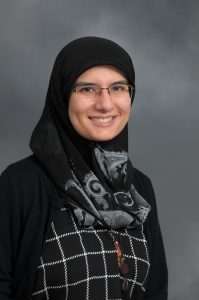
Area physicians suggested the particulates from wildfires could be even more problematic than those generated from industrial sources.
Burning biomass releases a range of toxic species into the air, said Dr. Mahdieh Danesh Yazdi, an air pollution expert and environmental epidemiologist from Stony Brook University’s Program in Public Health.
The U.S. Environmental Protection Agency has done a “fairly decent job” of regulating industrial pollution over the last few decades “whereas wildfires have been increasing” amid drier conditions, Yazdi added.
In her research, Yazdi studies the specific particulate matter and gaseous pollutants that constitute air pollution, looking at the rates of cardiovascular and respiratory disease in response to these pollutants.
Mental health effects
Local health care providers recognized that a sudden and lasting orange glow, which blocked the sun and brought an acrid and unpleasant smell of fire, can lead to anxiety, which patients likely dealt with in interactions with therapists.
As for activity in the hospital, Dr. Poonam Gill, director of the Comprehensive Psychiatric Emergency Program at Stony Brook Hospital, said smoke from the wildfires did not cause any change or increase in the inpatient psychiatric patient population.
In addition to the eerie scene, which some suggested appeared apocalyptic, people contended with canceled outdoor events and, for some, the return of masks they thought they had jettisoned at the end of the pandemic.
“We had masks leftover” from the pandemic, and “we made the decision” to use them for an event for his son, said Schwaner.
When Schwaner contracted the delta variant of COVID-19, he was coughing for three to four months, which encouraged him to err on the side of caution with potential exposure to smoke and the suspended particulates that could irritate his lungs.

